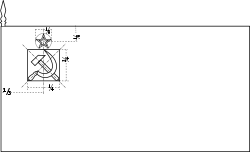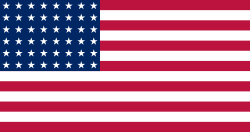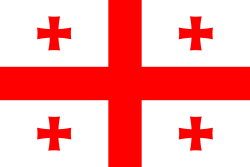Louis Hostin
| Louis Hostin | |
|---|---|
 | |
| Osobní informace | |
| Datum narození | 21. dubna 1908 |
| Místo narození | Saint-Étienne |
| Datum úmrtí | 29. června 1998 (ve věku 90 let) |
| Místo úmrtí | Boisseron |
| Občanství | |
| Výška | 182 cm |
| Hmotnost | 82 kg |
| Sportovní informace | |
| Sport | vzpírání |
| Váhová kategorie | lehkotěžká váha |
| Účast na LOH | 1928, 1932, 1936 |
| Některá data mohou pocházet z datové položky. | |
| Přehled medailí | ||
|---|---|---|
| zlato | 1932 Los Angeles | do 82,5 kg |
| zlato | 1936 Berlín | do 82,5 kg |
| stříbro | 1928 Amsterdam | do 82,5 kg |
| Mistrovství světa ve vzpírání | ||
| stříbro | 1937 Paříž | do 82,5 kg |
| bronz | 1938 Vídeň | do 82,5 kg |
| Mistrovství Evropy ve vzpírání | ||
| zlato | 1930 Mnichov | do 82,5 kg |
| zlato | 1935 Paříž | do 82,5 kg |
Louis Hostin (21. dubna 1908 Saint-Étienne – 29. června 1998 Boisseron) byl francouzský reprezentant ve vzpírání.
Pocházel z dělnické rodiny, později pracoval jako krupiér. Začínal jako vrhač koulí, na vzpírání se zaměřil ve věku devatenácti let, kdy vstoupil do klubu Omnium stéphanois. Na LOH 1928 skončil v lehkotěžké váze na druhém místě, na LOH 1932 a LOH 1936 získal v této váhové kategorii zlatou medaili. Byl prvním vzpěračem, který dokázal obhájit olympijské prvenství.[1] Vyhrál mistrovství Evropy ve vzpírání v letech 1930 a 1935, na mistrovství světa ve vzpírání byl v roce 1937 druhý a v roce 1938 třetí. Třináctkrát byl vzpěračským mistrem Francie a vytvořil osmnáct světových rekordů.
V roce 1978 se stal nositelem Národního řádu za zásluhy a v roce 1994 byl uveden do Síně slávy Mezinárodní vzpěračské federace.
Reference
- ↑ Klasický vzpěrač: Louis Hostin. MUSCLE&FITNESS Online [online]. [cit. 2019-07-16]. Dostupné online.
Externí odkazy
 Obrázky, zvuky či videa k tématu Louis Hostin na Wikimedia Commons
Obrázky, zvuky či videa k tématu Louis Hostin na Wikimedia Commons - Louis Hostin v databázi Olympedia (anglicky)
- Encyclopaedia Universalis
Média použitá na této stránce
Olympic Rings without "rims" (gaps between the rings), As used, eg. in the logos of the 2008 and 2016 Olympics. The colour scheme applied here was specified in 2023 guidelines.
Olympic Rings without "rims" (gaps between the rings), As used, eg. in the logos of the 2008 and 2016 Olympics. The colour scheme applied here was specified in 2023 guidelines.
US Flag with 48 stars. In use for 47 years from July 4, 1912, to July 3, 1959.
Flag of Second Polish Republic and later People's Republic of Poland in period from March 29, 1928 to March 10, 1980. Red shade used here is HTML "vermilion" #E34234. Proportion 5:8.
(c) I, Cmapm, CC BY-SA 3.0
The flag of the Soviet Union (1955-1991) using a darker shade of red.

(c) I, Cmapm, CC BY-SA 3.0
The flag of the Soviet Union (1955-1991) using a darker shade of red.

Flag of Iran. The tricolor flag was introduced in 1906, but after the Islamic Revolution of 1979 the Arabic words 'Allahu akbar' ('God is great'), written in the Kufic script of the Qur'an and repeated 22 times, were added to the red and green strips where they border the white central strip and in the middle is the emblem of Iran (which is a stylized Persian alphabet of the Arabic word Allah ("God")).
The official ISIRI standard (translation at FotW) gives two slightly different methods of construction for the flag: a compass-and-straightedge construction used for File:Flag of Iran (official).svg, and a "simplified" construction sheet with rational numbers used for this file.
this is the flag of the Soviet Union in 1936. It was later replaced by File:Flag of the Soviet Union (1955-1980).svg.
Flag of Romania, (21 August 1965 - 22 December 1989/officialy 27 December 1989).

Construction sheet of the Flag of Romania as depicted in Decree nr. 972 from 5 November 1968.
- l = 2/3 × L
- C = 1/3 × L
- S = 2/5 × l
flag of the Kingdom of Egypt (1922–1953) and the Republic of Egypt (1953–1958).
Portrait de Hostin, champion olympique de poids et haltères, français : [photographie de presse] / Agence Meurisse.
Flag of Second Polish Republic and later People's Republic of Poland in period from March 29, 1928 to March 10, 1980. Red shade used here is HTML "vermilion" #E34234. Proportion 5:8.















